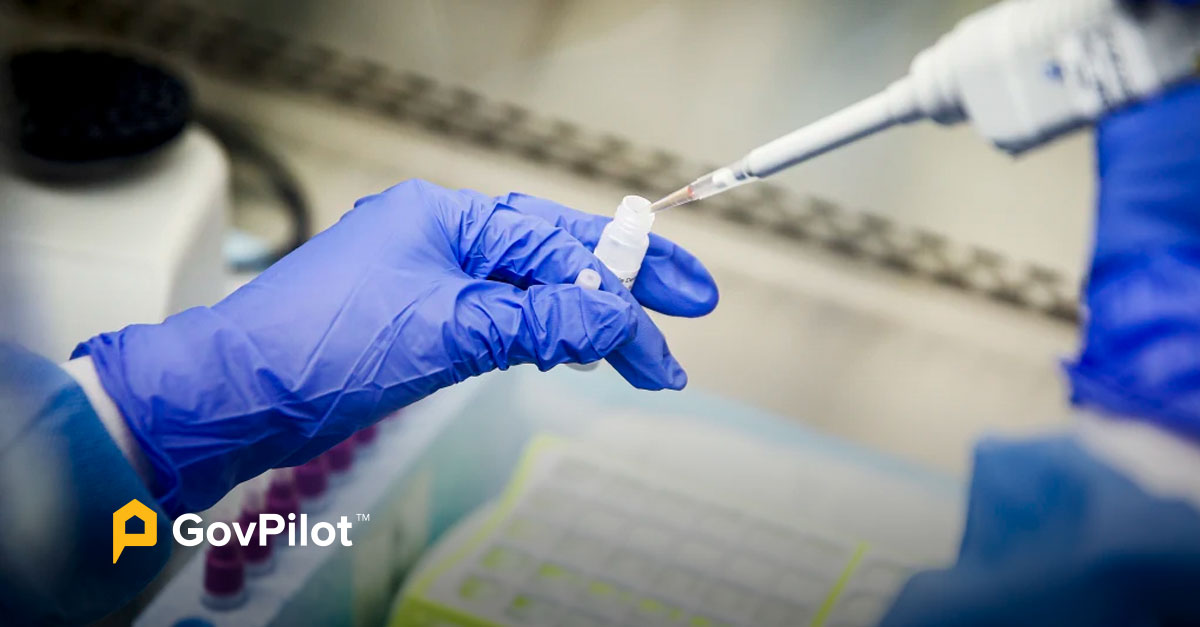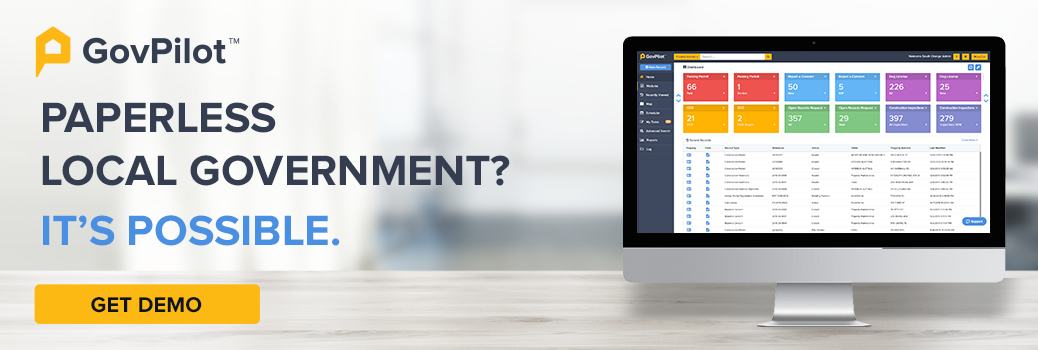Local governments have played an integral role in local health testing for decades, and the pressure for regular testing has only increased since the COVID-19 pandemic. Yet, as the need for frequent testing increased during the pandemic, a lack of accessibility to nearby testing in many areas across the country left thousands of citizens at-risk, especially for those in vulnerable communities.
Local health departments owe it to their citizens to test for COVID-19 and its various evolving strains, annual flu outbreaks, STIs, water-borne illnesses, and other health threats and be able to visualize the results with data. And in coordinating health testing in your community, your strategic planning needs to ensure access for all citizens, including the impoverished, elderly, and people with limited access to transportation.
In this guide, you’ll learn more about the ongoing importance health testing plays at a local and national level, how your local health department can improve testing procedures, and utilize health department software to store health data and automate workflows. Follow along for everything you need to know.
Why Do Local Governments Have an Obligation to Perform Health Testing?
By performing health tests and screenings in your community, your locality can catch infectious diseases early on, prevent outbreaks, and identify potential environmental hazards. The public health data collected from these tests can help your local government to make informed decisions about the types of health risks plaguing your community, which populations are most at-risk, and the types of public health interventions (like vaccines) and policies that can be used to mitigate the risk of health threats.
Here are Important Strategic Planning Tips for Public Health Directors to consider involving health testing and beyond.
What Types of Health Tests Do Local Governments Need to Prioritize?
The types of health tests that local governments should offer their citizens depend on various factors such as the prevalence of specific health conditions in the community, the availability of testing resources, and the local public health priorities.
Here are types of health tests that local governments should consider offering to their citizens:
- Covid-19 Testing: Given the ongoing COVID-19 pandemic, local governments need to continue to have testing sites to provide diagnostic tests for the virus and its various variants.
- Sexually transmitted infection (STI) testing: STI testing can be offered at local health clinics to help identify and treat infections like chlamydia, gonorrhea, and syphilis.
- Cancer screenings: Depending on the local public health priorities, local governments may offer cancer screenings such as mammograms, colonoscopies, and Pap smears to help detect and treat cancer at early stages.
- Blood pressure and cholesterol screenings: These screenings can help identify individuals at risk for heart disease and encourage them to make lifestyle changes or seek medical treatment as needed.
- Diabetes testing: Diabetes testing can help identify individuals with prediabetes or diabetes so that they can receive appropriate treatment and management.
- Lead testing: Local governments may offer lead testing for individuals who may have been exposed to lead, such as children who live in older homes with lead-based paint. Learn more about the NJ Lead Paint Inspection Law for tips on preventing lead poisoning in community housing.
- Water quality & water-borne illness testing: Clean drinking water is essential for public health. Unfortunately, local water supplies can sometimes become contaminated with algae, amoebas, or chemicals. Regular testing of local water sources, facilities, and infrastructure can ensure public safety. Here's more helpful resources for Protecting Local Bodies of Water and forging a Modern Local Government Water Utilities Strategy.
How Can Local Governments Improve Testing Processes?
With limited budgets and not enough resources, your local government may have struggled to provide the ideal health testing services needed at the height of the pandemic. Fortunately, many lessons were learned from COVID-19, and workflows were approved upon through data collection and innovation in government technology.
Consider these ways that your local health department should improve upon your existing processes:
1. Utilize Public Health Grants
Legislation like the American Rescue Plan Act and US Infrastructure Investments and Job Act was passed in recent years to address increasingly antiquated infrastructure across the United States via grant dollars. Local health departments can look to federal and state grant dollars (like the recent NJ Department of Health Grants for Local Health Departments) to modernize their public health infrastructure, including the key technology required to perform health testing and store health data.
2. Increase Access to Health Testing
Local governments can increase access to testing by setting up testing sites in areas that are easily accessible to the public, such as community centers, schools, and healthcare facilities. Consider offering free or low-cost testing to ensure that everyone has access to testing, regardless of their ability to pay or access to transportation.
Increased access to health testing is one of many reasons to embrace improved walk and bike-ability in your community. Learn more:
- How Local Governments Can Improve Municipal Planning
- Pedestrian Zones & Bike Lanes: How to Bring Them to Your Community
- Regulating E-Bikes at the Local-Level: Considerations for Municipalities
3. Improve Communications & Education With Your Citizens
Local governments can improve communication and education around health testing by providing clear information about the testing process, what to expect during testing, and how to access testing sites.
Government social media accounts and your local government website should be utilized to promote testing opportunities in your neighborhood. The importance of health testing should also be discussed at local public meetings.
Utilize a public facing Geographic Information System (GIS) map to visualize data such as flu cases via a heatmap, medical clinic sites, or to quickly generate a mail merge list of addresses so that you can mail important health information to your residents.
How Can Governments Improve Their Communications? Here’s everything to consider.
4. Prioritize High-Risk Populations
Your local government needs to prioritize testing for high-risk populations, such as healthcare workers, first responders, and the elderly. By focusing testing resources on these populations, local governments can help prevent the spread of disease and protect those who are most vulnerable.
Learn more about How Your Local Government Be More Equitable.
5. Use Data to Inform Testing Strategies:
Local governments can use data from testing to inform ongoing public health strategies and make data-driven decisions about where and how to allocate health department resources.
Health data can ensure that testing is being used effectively to prevent the spread of disease and protect public health.
How Can Health Department Technology Help With Health Testing?
Health department software can automate previously time-consuming health testing workflows and store related data in the cloud.
Here are key benefits to using government technology for modernizing local health testing:
-
Mobile Testing Forms
Public officials can use mobile government devices to record testing data in a simple manner. When tests are completed, all of the testing data will be stored in the cloud and accessible to health officials in real time.
-
Streamlined Communications
Public health officials need to coordinate within their department, with state and federal officials, with health testing private contractors, and of course, with your constituents.
Using GovPilot’s government software across departments allows for simplified, cybersecure communications between health officials, their citizens, and other government entities.
GovTip: Encourage your citizens to use the report-a-concern app to reach out to your government if they suspect there’s an outbreak in their neighborhood. Public officials will be instantly notified and can plan for screenings in that particular area.
-
Cloud Health Data Storage
Public health data storage can be moved to the government cloud for:
- Instant uploading of health testing data from the field into the cloud with immediate access to relevant health officials
- Cybersecure data storage with regular backups of sensitive health data
- Pulling important health testing data into insightful dashboards and reports
Follow along for more insight into the Benefits of the Government Cloud.
How Does Modern Public Data Storage of Public Health Testing Help Local Health Departments?
By using modern cloud-based public data storage, your local government can store historical records from health testing as well as health inspections and various other health department documents for your government’s long-term use.
Here are some of the benefits of collecting health testing data and pulling your health data for government analytics reports and dashboards to make informed-decisions:
1. Monitoring the Spread of Infectious Diseases:
Health testing data can provide local health departments with information about the prevalence and spread of infectious diseases in their communities. This information can help public health officials identify areas where outbreaks may be occurring and take targeted measures to prevent further spread.
GovTip: With GIS map technology, your local health department can mark specific areas on a 3D map of your community to record the neighborhoods dealing with the most exposure to a contagion. This map can be made public to pass that information onto your citizens.
2. Identifying At-Risk Populations:
Health testing data can help identify populations that may be at higher risk of contracting or spreading infectious diseases, such as healthcare workers or individuals living in densely populated areas. This information can be used to prioritize resources, such as vaccines or testing supplies, to those who need them most.
Learn more about Population Planning Strategies for Local Governments.
3. Developing Public Health Interventions:
Health testing data can help local health departments develop and evaluate public health interventions, such as vaccination campaigns or contact tracing programs. By analyzing health testing data, public health officials can determine which mitigative approaches are most effective at preventing the spread of disease and protecting public health in your community.
4. Informing Public Health Policies:
Health testing data can also be used to inform public health policies at the local, county, state, and national levels. By analyzing health testing data, policymakers can develop evidence-based policies to prevent the spread of disease and promote public health.
Improve Health Testing In Your Community
Health testing is an important tool for protecting public health by identifying and preventing the spread of infectious diseases, identifying environmental hazards, and detecting diseases in their early stages. By performing health testing, public health officials can help keep communities healthy and safe.
To learn more about how GovPilot health department software can help with testing and beyond, book a free demo.
Local Government Health Testing FAQs
1. What Types of Health Tests Should Local Governments Prioritize?
Local governments should offer tests and screenings for COVID-19, heart disease, diabetes, STIs, cancer, and diabetes. Specific testing should be made available depending on the largest health threats in your community.
2. How Does Government Software Help With Local Health Testing?
Government software can be used to record health testing data in the field from a mobile phone or tablet, cloud storage of health department data, and simplified digital communications between health officials.
Read on:
- Modern Local Code Enforcement Strategy
- Encouraging Civic Engagement from Your Citizens
- How Do Online Permitting Systems Work?
- Actionable Tips for City Managers & Administrators
- Continuity of Government: Government Procedures During a Crisis
- Modern Local Engineering Department Strategy
- Modern DPW Strategy for Local Governments
- Modern Animal Control Strategy for Local Governments
- Modern Parks & Recreation Strategy for Local Governments
- Local Body of Water Protection
Sources:
- https://health.gov/myhealthfinder/doctor-visits/screening-tests/get-screened
- https://medlineplus.gov/lab-tests/
- https://www.cdc.gov/coronavirus/2019-ncov/covid-data/covidview/index.html
- https://www.americancityandcounty.com/2021/05/05/how-local-government-can-use-proactive-health-monitoring-and-outreach-to-improve-community-health-outcomes/
- https://www.cdc.gov/coronavirus/2019-ncov/science/about-epidemiology/monitoring-and-tracking.html
- https://www.cdc.gov/parasites/naegleria/public-water-systems.html










